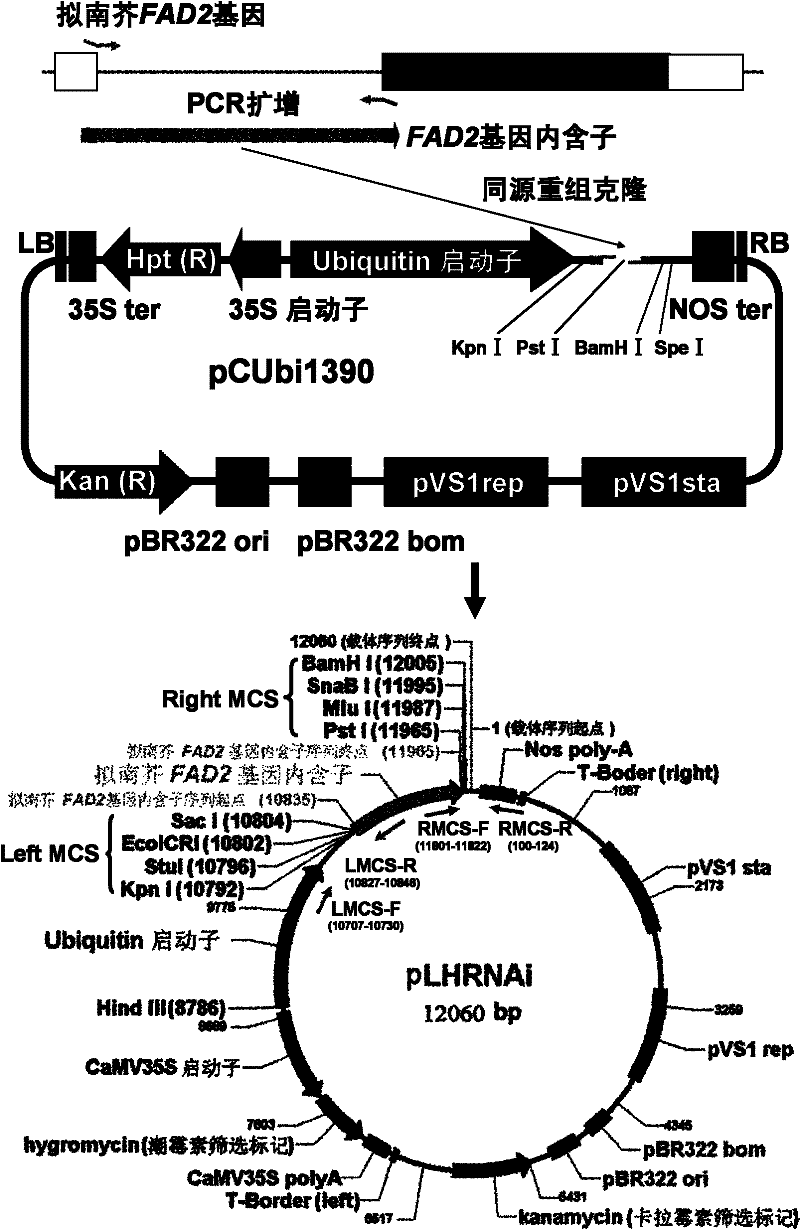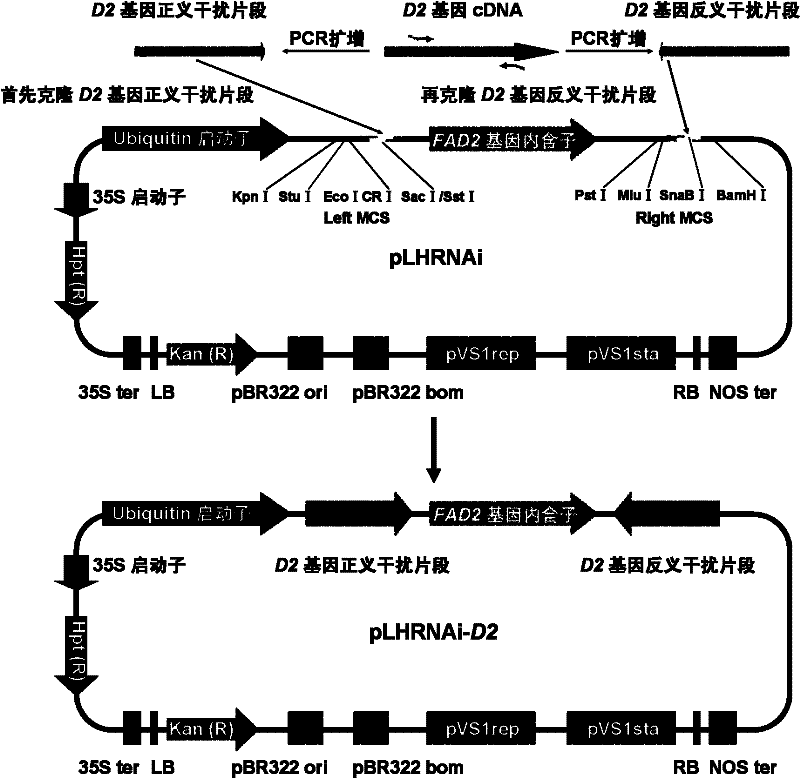RNA (Ribonucleic Acid) interference vector and application thereof
A technology of RNA interference and interference carrier, which is applied in the field of RNA interference carrier, can solve problems such as linkage burden, prolong breeding cycle, increase workload, etc., and achieve the effects of reducing errors, improving work efficiency, and flexible operation
- Summary
- Abstract
- Description
- Claims
- Application Information
AI Technical Summary
Problems solved by technology
Method used
Image
Examples
Embodiment 1
[0067] Embodiment 1, the construction of RNA interference vector pLHRNAi
[0068] The RNA interference vector pLHRNAi uses the method of homologous recombination directional cloning. The intron of the Arabidopsis FAD2 gene is forward cloned into the plant binary vector pCUbi1390 with a hygromycin selection marker. The structure diagram of the RNA interference vector pLHRNAi is shown in figure 1 As shown, the specific method is as follows:
[0069] 1. Obtaining the intron fragment of the Arabidopsis FAD2 gene
[0070] Arabidopsis thaliana (L.) was extracted by CTAB method (Kraft E, Stone SL, Ma LG, Su N, Gao Y, Lau OS, Deng XW, Callis J(2005) Genome analysis and functional characterization of the E2 and RING-Type E3 ligase ubiquitination enzymes of Arabidopsis. Plant Physiol 139:1597-1611, publicly available from Institute of Crop Science, Chinese Academy of Agricultural Sciences.) Genomic DNA.
[0071] The primer sequences for the amplified introns were designed as follows (...
Embodiment 2
[0101] Embodiment 2, the application of RNA interference vector pLHRNAi
[0102] 1. Construction of D2 Gene RNA Interference Vector pLHRNAi-D2
[0103] 1. Obtaining the D2 gene interference fragment
[0104] Brassinosteroid (BR) is an important plant hormone controlling plant height, which is synthesized by a series of brassinosteroid synthases. In rice, the CYP90D2 / D2 gene encodes a key synthetase in the brassinosteroid synthesis pathway.
[0105] 1) Primer design
[0106] (1) Primers used to amplify the sense interference fragment of the D2 gene
[0107] The underlined letters indicate the homologous recombination sequences on both sides of the Sac I restriction site on the upstream multiple cloning site of the pLHRNAi vector (which can be cloned into the vector through homology and same group orientation), and the left slash indicates Kpn I and Sac I restriction endonuclease cleavage site (can be cloned onto the vector by double-enzyme digestion connection), the primer ...
PUM
 Login to View More
Login to View More Abstract
Description
Claims
Application Information
 Login to View More
Login to View More - R&D
- Intellectual Property
- Life Sciences
- Materials
- Tech Scout
- Unparalleled Data Quality
- Higher Quality Content
- 60% Fewer Hallucinations
Browse by: Latest US Patents, China's latest patents, Technical Efficacy Thesaurus, Application Domain, Technology Topic, Popular Technical Reports.
© 2025 PatSnap. All rights reserved.Legal|Privacy policy|Modern Slavery Act Transparency Statement|Sitemap|About US| Contact US: help@patsnap.com



